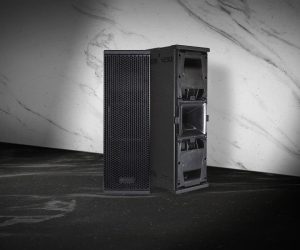
Review: Mitsubishi XD8100
An XGA dual-lamp single-chip DLP installation projector.
Review:/ Stuart Gregg
I haven’t looked at very many Mitsubishi projectors over the years so I was keen to see how this model performed.
The XD8100 is a single chip (0.7-inch Darkchip) DLP unit producing a quoted 7000 lumens with a 2000:1 contrast ratio. There are two colour wheel options, with one favouring overall light output and the other higher fidelity in colour reproduction. The unit I looked at was fitted with the higher output option.
You also have a selection of interchangeable lens and lens adapters to choose from, giving a good range of throw distances. The process of swapping lenses was not difficult, but as with most projectors, not designed to be done on a daily basis as might be needed in a rental business.
My first impressions of the projector were that it was built and designed well; it looks like a quality product. The white case and clean lines meant it would be unobtrusive in the roof of an install.
It has plenty of other functions and features that speak to its purpose as an installation product. Mitsubishi has borrowed from other departments and fitted this projector with a self-cleaning filter system derived from those in their air conditioning units. The filter can be set to clean itself to a schedule or triggered manually, this would hopefully lead to better overall cooling and a long-lasting product, as experience has taught me that heat is the major killer of projectors. The projector itself is fairly large but this again means there is plenty of room and air inside to keep the electronics cool.
Lamp life is reasonable with a claimed 8000 hours possible in the extended-life economy mode, although I have never meet anyone who uses projectors in economy mode, so you could expect 2000 in real-world conditions.
The projector is very quiet when running in both single and dual lamp mode and can be mounted in any orientation through 360° in any direction without any caveat about lamp life reduction.
BLENDING & BENDING
Other useful features include geometry and edge blending functions. While single-chip projectors would not be my first choice for blending, the option is handy and looked to be fairly good, although with only a single unit to test, I can only comment on the menu options and how the curve appeared on our test image.
Geometry correction is extensive, with a decent range of keystone and corner adjustments, as well as the ability to correct for curved surfaces. As with all projectors, this eats into your available pixels and requires some pixel juggling by the projector. In the case of the XD8100 it did an okay job of this, given it is an XGA unit.
There is a full range of input connections with the usual VGA and BNC as well as both HDMI and DVI, so no need for awkward adapters. Control and network are taken care of by Ethernet, RS232 and built-in Crestron and AMX functionality. The menu layout and structure is not the most elegant around but is functional when you get used to it.
I ran a mix of sources and signal types through the projector from DVD on composite video, PC at VGA, Macs on DVI, camera on HDMI. The video pictures held were big and bright with reasonable colour and dark scene reproduction – as you would expect from a projector designed for multiple purposes and not tuned specifically for movies.
Analogue computer signals reproduced well, although on several signals you could get a better result manually than using the auto setup. As a single chip projector there is some flattening of certain colours (noticeable on the standard windows folder colour) but overall the picture was good.
Digital signals came in clean and the projector identified itself to the Mac without any issues. Using gamma and colour adjustments you can achieve a nice looking presentation image, but you would want to adjust each source individually and save as custom files to ensure you get the best out of the unit.
Overall this is a well built projector with some nice options and features, its picture quality is comparable with all good single-chip projectors and its build quality lead me to believe that it would make a great unit for digital signage and mid-size education installs.
MORE INFO
PRICE
$14,990 (inc GST)
CONTACT
Mitsubishi Electric Australia: (02) 9684 7777 or mea_vis@meaust.meap.com















RESPONSES